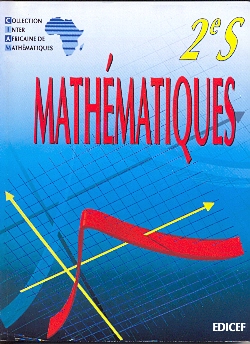| Robert L Brooks | ||||
| Springer | ||||
| 2013 | ||||
| English | ||||
| 183 pages | ||||
| 1.57 MB | ||||
[tab] [content title="Summary"] **The Fundamentals of Atomic and Molecular Physics** is designed as an accessible introduction to atomic and molecular physics for advanced undergraduates with a background in quantum mechanics. The book is structured to progressively build the reader’s knowledge and skills, allowing them to apply core quantum mechanical methods effectively as they work through the material. The approach emphasizes understanding the key principles behind complex systems, while avoiding unnecessary complexity that might arise from more advanced techniques. ### Key Features of the Book: 1. **Progressive Learning Approach**: - Each chapter introduces new concepts that build on previous chapters, using consistent tools and methods to foster mastery. This gradual buildup allows students to grow more confident in their ability to handle increasingly complex problems in atomic and molecular physics. 2. **Two-Electron Atoms**: - The book focuses on the two-electron atom (such as the helium atom) as a primary example. This approach simplifies the study of multi-electron atoms by using a foundational model, rather than diving into more complicated equations that might not be directly applicable to more complex systems. 3. **External Fields and Perturbation Theory**: - The treatment of external fields, such as electric and magnetic fields, uses both perturbation theory (which deals with small changes to a system) and direct diagonalization methods. This allows students to learn different mathematical techniques for dealing with perturbations in quantum systems. 4. **Spontaneous Emission**: - The concept of spontaneous emission (the process by which an atom releases a photon and transitions to a lower energy state) is derived from first principles, providing students with a thorough understanding of the physical processes involved. 5. **Diatomic Molecules**: - While the focus is primarily on atomic systems, the book also considers simple diatomic molecules. Detailed treatments of the hydrogen molecular ion (H₂⁺) and neutral hydrogen molecules provide insight into molecular structure and bonding. 6. **Application to Graduate Studies**: - The comprehensive coverage of quantum mechanics applied to atomic and molecular systems makes this book particularly useful for students planning to pursue graduate studies in fields such as atomic physics, quantum chemistry, or condensed matter physics. ### Learning Objectives: By the end of the book, students should be able to: - Understand the quantum mechanical description of atomic systems, with a particular emphasis on multi-electron atoms. - Use perturbation theory and direct diagonalization to analyze systems under external fields. - Apply the principles of spontaneous emission to describe atomic transitions. - Understand the basic quantum mechanics of diatomic molecules, particularly the hydrogen molecular ion. This textbook is an ideal resource for advanced undergraduates who want to gain a solid foundation in atomic and molecular physics. It prepares students for more specialized graduate-level work by building their quantum mechanics knowledge step by step, starting with the fundamental concepts and progressively tackling more complex topics. [/content] [content title="Content"] [/content] [content title="Author(s)"] [/content] [/tab]
[facebook src="bibliosciencesorg"/]
Key-Words: Télécharger The Fundamentals of Atomic and Molecular Physics EBOOK PDF EPUB DJVU . Download The Fundamentals of Atomic and Molecular Physics EBOOK PDF EPUB DJVU .









